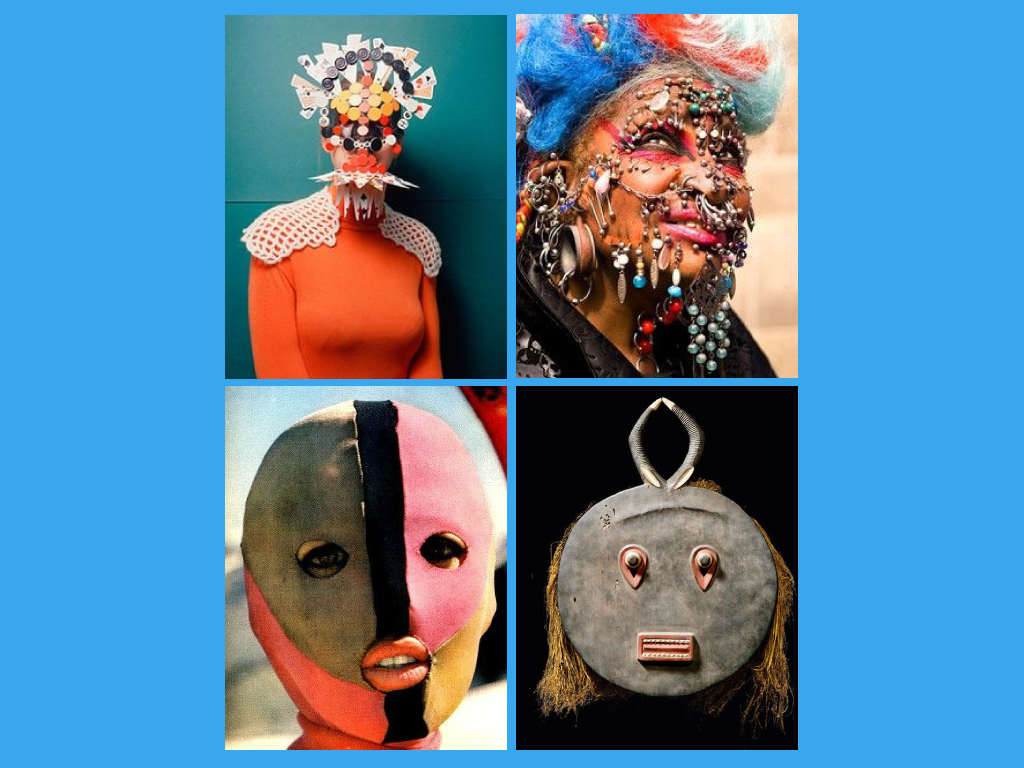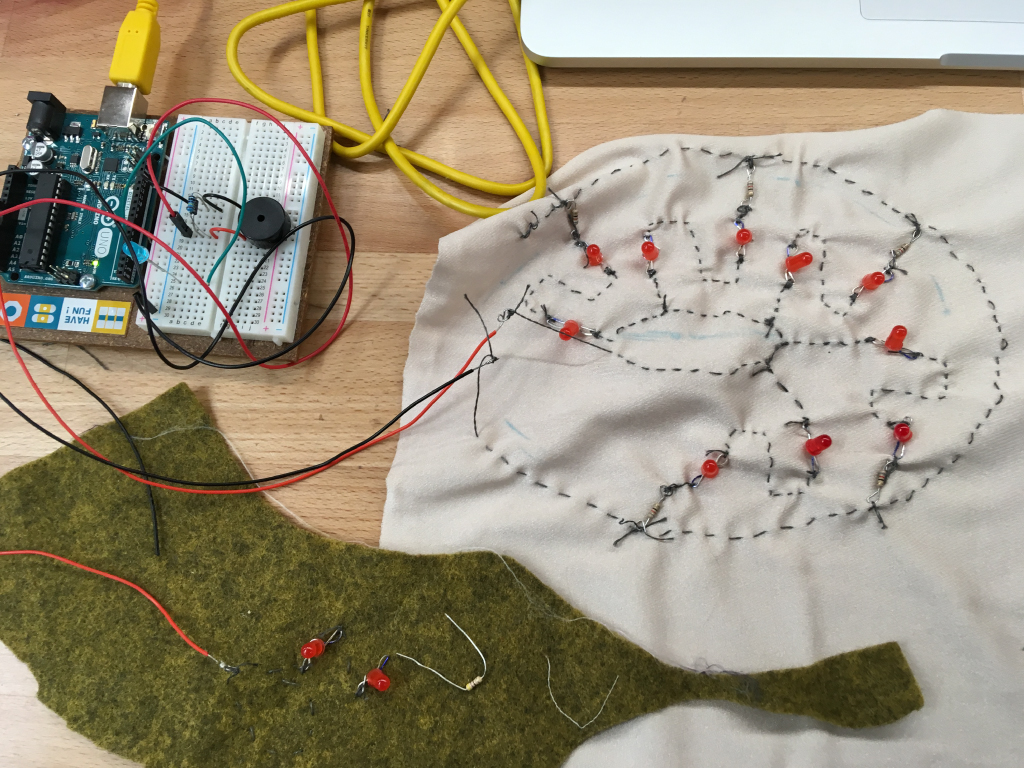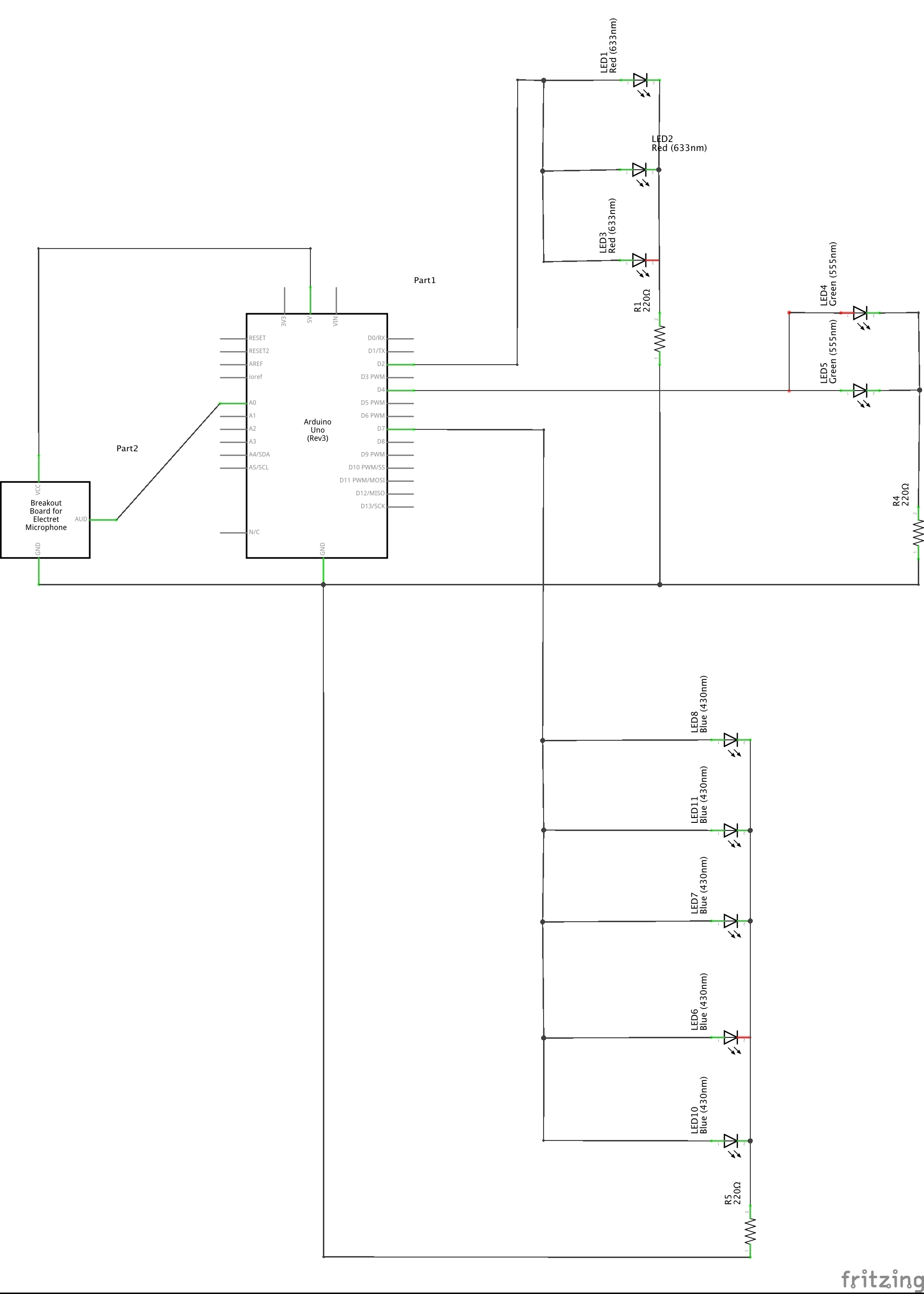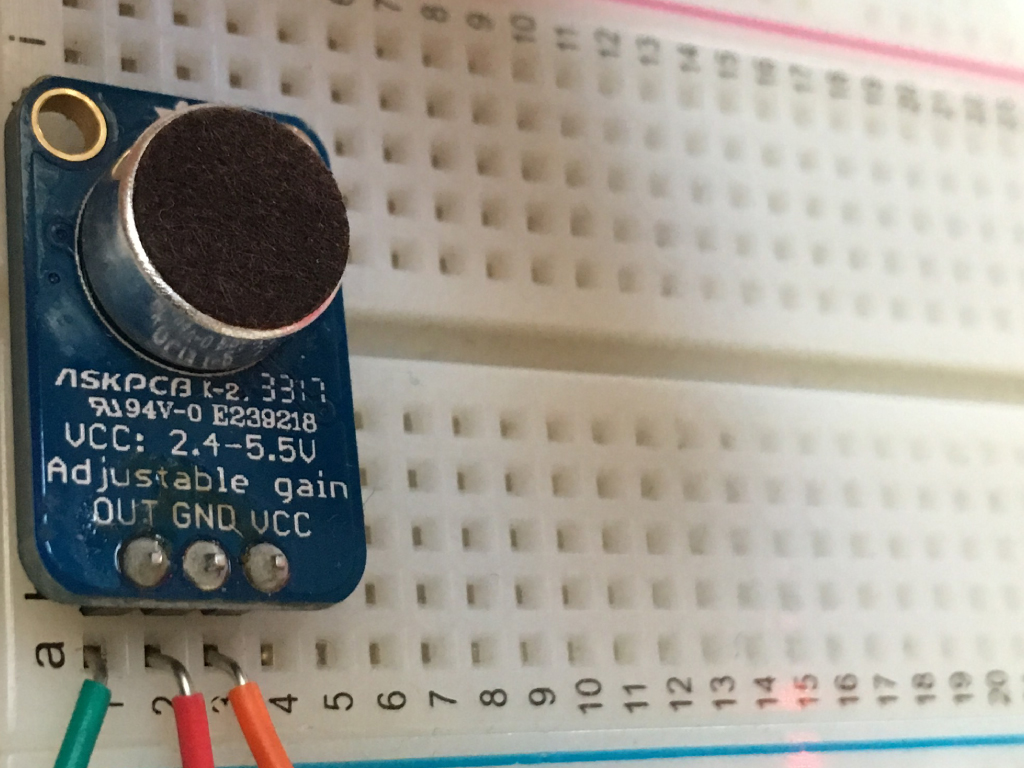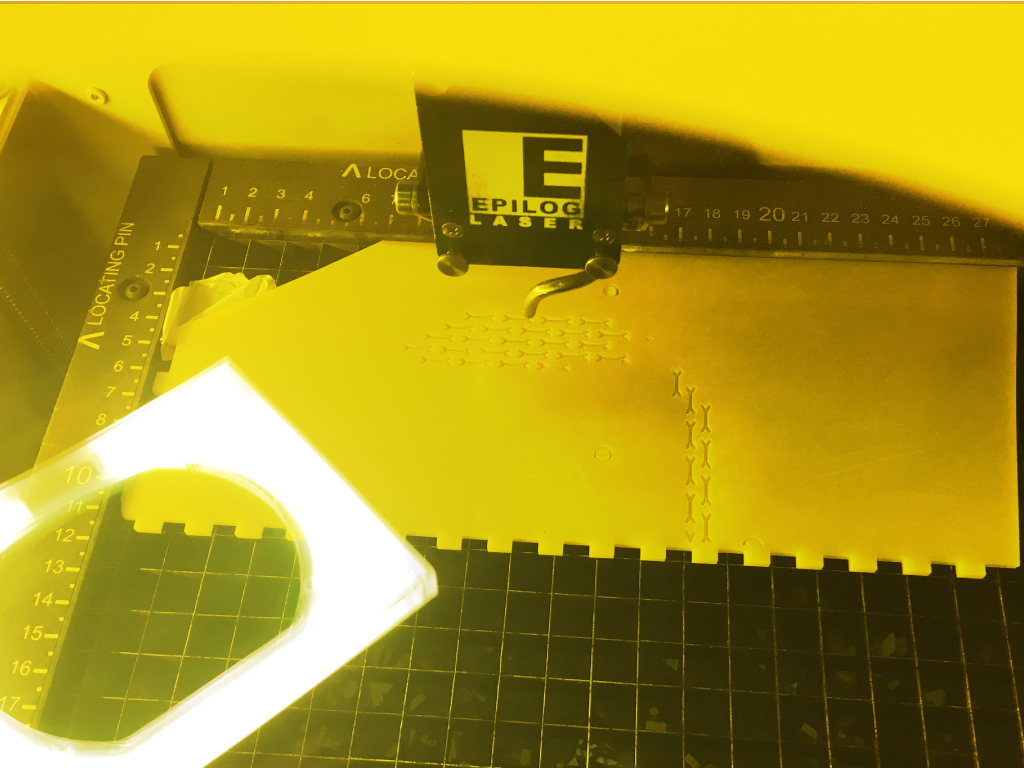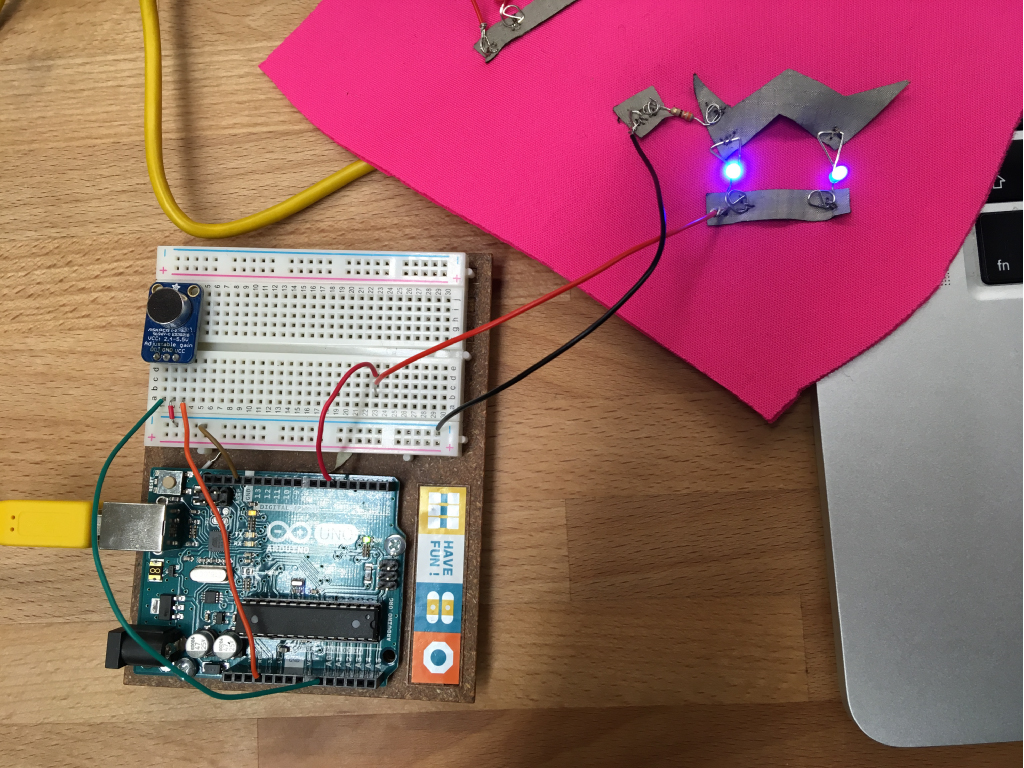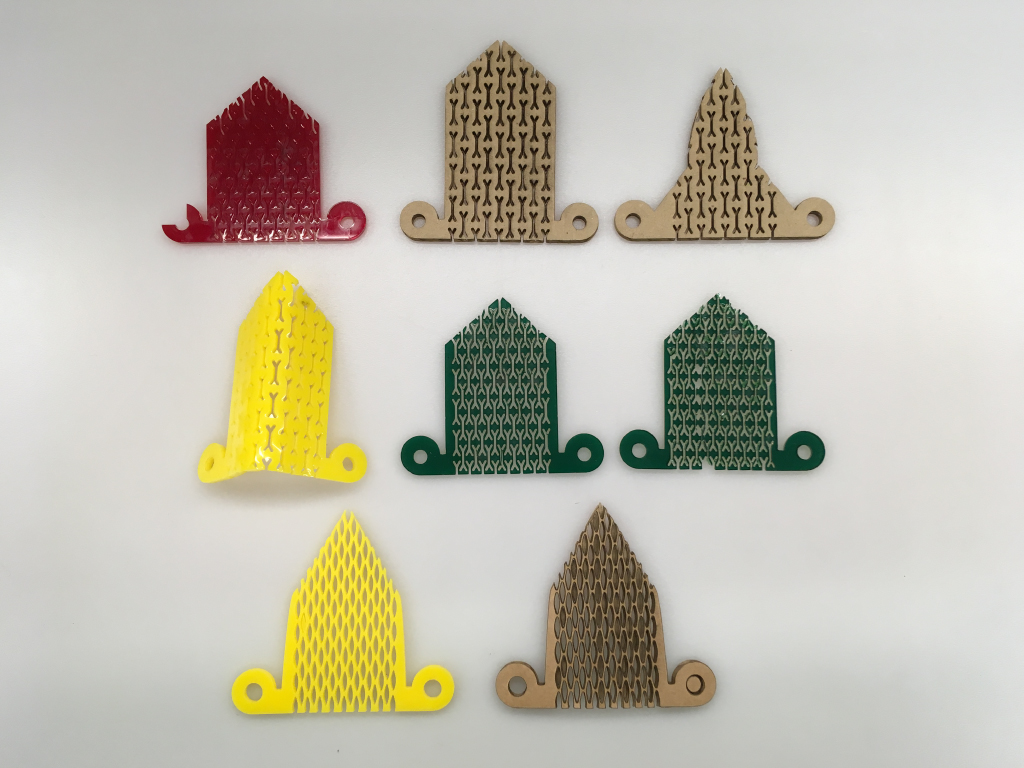Sound reactive balaclava
Exploring the relationship between shamanism and technology the sound reactive balaclava responds to 3 different sound levels giving the performer a way to add drama to their own voice as well as to react to the soundscape of a participatory crowd.
produced by: Panja Göbel
Work process
I originally intended to built a facial obscurer with integrated led grid that responds to voice commands to deliver different facial expressions. For this I ordered the 3VR voice recognition shield, but through my research learnt that this would work better with a raspberry Pi as the arduino doesn’t handle sound very gracefully. I then ordered an Electret Microphone to integrate it as a first stage prototype in order to demonstrate the mask responding to three different sound levels.
Parallel to my sound research I started research on my Led grid to enable different facial expressions. I considered ordering some individually addressable neo pixels but they seemed expensive at the time as I needed to build a grid of at least 8x8. I also researched multiplexing normal leds but due to my technical knowledge at the time couldn’t find a way to translate this mechanism for a soft circuit mask.
I needed to get away from the led matrix and radically simplify my project prototype. This is where my project took a turn. Since my start with electronics I always liked the natural beauty of the components and their affinity to tribal art and subcultures such as piercing and steam punk.
I then focused on fixed facial features that I would stitch my led circuits on. I first experimented with conductive thread to make a 12 led mixed series/parallel circuit. After stitching this circuit I learnt that the threat builds up resistance in itself on longer circuits and this meant that I needed to use less resistors in my circuit. I then ordered some electronic ripstop which is more conductive then the thread and redesigned my led circuits again. The ripstop can be fixed to iron on fabric to make it more rigid and easier to fix to fabric. It can also be laser cut to cut out bespoke shapes for soft circuits and I’m keen to experiment with this further.
The Mask was building up nicely with ripstop facial features and exposed wires, resistors and leds but I felt it could do with another decorative element. So I started experimenting with laser cut acrylic ears and a nose which I wanted to create a living hinge on. I found a great instructable tutorial with different patterns and then decided to prototype my own patterns. I developed 9 noses by alternating the density in the hinge patterns but haven’t found the perfect sweet spot yet as the 4mm acrylic either stays too rigid or ends up too fragile. In the end I used a heat gun on a more rigid living hinge to bend it into position.
The element that was most erratic to work with was the sound. I spent hours trying to establish different thresholds with different bits of code that I found. In the end Pete, Bashar and me collaboratively wrote some code that helped remove the highly spiked sound input into something that resembled a sound wave on the serial plotter. Bashar wrote a smart bit of code that smoothed out the input data and mapped the analogue electret microphone data 0-1023 to the threshold range 0-5.
I enjoyed the process of experimentation and radically simplifying my ideas. However teaching myself soft circuits and researching new materials took up a considerable amount of design and planning time. There are many lessons learnt and lots of stuff I would do differently next time. If I had more time I would replace the arduino with a lilypad that would be sewn to the top or back of the mask. Also I had soldered my electret microphone onto the supplied header whilst I could have just sewn it onto the mask or onto a softcircuit fabric extension lead the wearer could hold.
References
Wearable electronics class on Instructable www.instructables.com/lesson/Sew-a-Circuit
Soft Electronics Tutorials www.kaytdek.trevorshp.com/projects/conductive/tutorial/tutorial.html
Great instructable on living / lattice hinges www.instructables.com/id/Curved-laser-bent-wood/
Wearable electronics inspiration Kobakant
Creative inspiration masks by Marie Rime































































